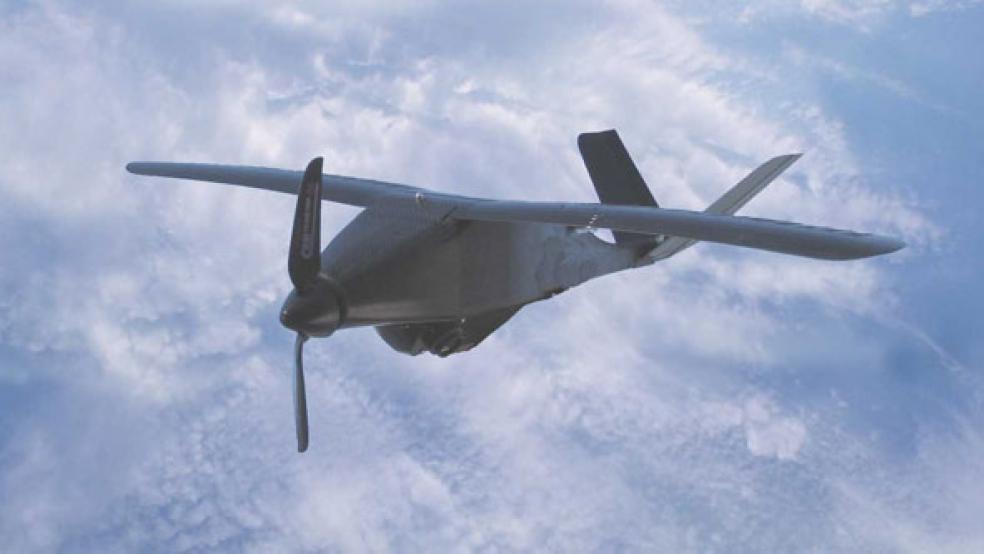It’s a bird…it’s a plane…it’s a…flying robot delivering mail?
The same aerospace technology the CIA uses to hunt terrorists could be buzzing around your neighborhood, patrolling traffic, spraying farmers’ crops, and ferrying your online purchases. It all depends on receiving approval from the Federal Aviation Administration, which is legally required to have drone regulations in place by 2015.
Once FAA clears these drones for takeoff, as many as 7,500 of them could be zipping above us within five years. The Association for Unmanned Vehicle Systems International—an industry trade group—estimates that by 2025, commercial drones will be an $85 billion industry.
Peter W. Singer, senior fellow at the Brookings Institution, said at a DC conference this month that opening up air space to commercial drones would do ”what the Internet did to desktop computers.”
But adapting the technology comes with some major obstacles that could keep the drone industry grounded. The two biggest pitfalls confronting the sector—privacy and, oddly enough, insurance. So far, the FAA has issued just 327 permits to fly UAVs, primarily to government agencies policing the borders.
Just like the Internet, Velcro, and atomic energy, drones appear to be the next government innovation set for civilian use. They may not be Predator drones soaring over Afghanistan, but they’re more amped up than the gizmos being sold at Brookstone’s.
Farmers can in theory use $9,000 drones as crop dusters, with the industry estimating that 80 percent of all drone flights will be for agri-business. FedEx founder Fred Smith told “Wired” magazine in 2009 that he would like to switch his fleet of cargo plans to drones.
PRIVACY
UAVs would go from keeping tabs on Osama bin Laden to keeping up with the Kardashians.
Gary Morgan, chief executive of “Splash,” a celebrity-photo agency, told The Wall Street Journal that once drones are legalized, he intends to assemble a small fleet of them to snap pictures of Hollywood stars. "It would strike fear in the hearts of every celebrity having a birthday party," Morgan said. "Call it C3paparazzo," after the robot in “Star Wars.”
That particular use stirs up fears of privacy violations. A drone as tiny as a bird can transmit images and video in real time to an observer fifty feet or 5,000 miles away.
The Fourth Amendment protects citizens’ right to privacy from government-operated drones, but private entities are not bound by the same restrictions.
According to a new survey by Robotics International, 67 percent of respondents are concerned about being spied on by flying robots overhead, prompting privacy legislation on both the state and federal level.
Reps. Joe Barton, R-TX, and Edward Markey, D-MA, introduced a bill in March to limit data-gathering by drones. Meanwhile, the Virginia General Assembly, recently passed a measure to restrict drone use in the state until July 2015, when the FAA is scheduled to have regulations in place. Texas, Oregon, and Nebraska are also trying to limit the use of drones by law enforcement officers.
Some experts warn that too much focus on privacy issues could hinder the industry and industry regulators. John McGraw, founder of McGraw Aerospace Consulting, said he worries that if the FAA is forced to focus on privacy regulations it could take away vital time and resources from the agency, since it’s not their job to regulate privacy. “
Setting regulations is easy,” McGraw said. “But setting the right regulations that don’t burden the industry will be more challenging.”
INSURANCE
If a drone plunges fireball-style into a thousand acres of corn, who reimburses the farmer who lost his harvest?
“Insurance is the 800 pound gorilla in the room that no one is talking about,” said Darryl Jenkins, an analyst for the Aviation Consulting Group. “Putting together an insurance package will be the next step. The only thing you need now is an insurance company with deep pockets to start this industry.”
As of now, three small insurance firms provide coverage for drones on a small scale. But in order for the industry to take off, major insurance companies will need to be involved. But no one knows how to structure the policy and how much to charge since there is no precedent for these vehicles and crash history is not part of the public record.
As a condition of acquiring insurance, the FAA will also need to craft a licensing and training process for unmanned vehicle operators. “There are an enormous amount of complex questions that still need to be answered,” Jenkins said. “This will be a highly regulated industry.”






